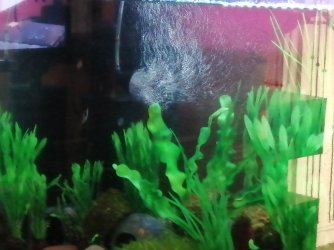So, I've read that you can run them 12 hours a day (IE: when my aquarium lights are on), and that is sufficient...
I'd like to get more factual and scientific about it.
When it comes to air stones:
For X tank size and X number of fish (assuming no live plants... for now)
## I don't have a DO meter, but I'm sure some of you fine fish folk do!
## I'd like to create a little algorithm and web app for this, once I have some reliable numbers.
Any help would be much appreciated!
Disclaimer: Not sure if an application and/or method already exists for air stone requirements/measurements, I'm new to this fish thing.
I'd like to get more factual and scientific about it.
When it comes to air stones:
For X tank size and X number of fish (assuming no live plants... for now)
## I don't have a DO meter, but I'm sure some of you fine fish folk do!

## I'd like to create a little algorithm and web app for this, once I have some reliable numbers.
- What size stones?
- What size air pump? (Single, Double, Quad Line? What wattage or GPA? I heard GPA is a somewhat inaccurate measurement of an air stone)
- How many stones? (does this affect nominal running time if I have multiple? I assume, yes. What about fine bubble/nano stones that claim higher dissolved oxygen?)
- Running time to reach nominal oxygenation?
Any help would be much appreciated!
Disclaimer: Not sure if an application and/or method already exists for air stone requirements/measurements, I'm new to this fish thing.



